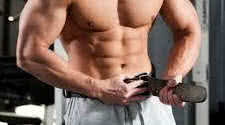The Basic Guidelines to Exercise & Weight Lifting Belts Use

Advanced Training & Well Being Article
In powerlifting, the rules allow for o belt that's 10 centimeters wide and o millimeters thick. The main reason weightlifters don't use this type of belt is that it can interfere with the execution of the lifts they perform. Of utmost importance in the first phase of the pull
for the snatch and clean and jerk is keeping the bar close to your body.
A thick powerlifting-type belt simply gets the way. In terms of the need for a belt, consider few points. If you're healthy, without any back problems, you may not need a belt. The main reason competitive lifters use belts is that allows them to lift more weight. In fact,
I get an immediate 25-pound increase in the weight I can squat when I wear a powerlifting belt. The belt firmly presses my organs against the anterior portion of my spine, giving me additional strength and support in the area.
When you wear a belt continuously, however, you rob your body's postural muscles some important work. In doing so, you're in sense creating a weakness in that area because the belt does a great deal of the work. You certainly wouldn't want to predispose yourself injury because
of weak postural muscles.
In terms of training, then, at the very least use a belt for only your heaviest sets above about 85% of your one-rep max. You won't he able to move as much weight without a belt, but this doesn't mean you're weaker. And you decide not to use a belt at all, that's fine, too.
The notion that a belt prevents injury false. I'd say most injuries occur as a function of poor technique, and a belt isn't going improve that - it may just drag out the inevitable.